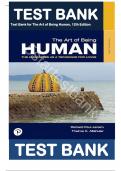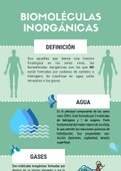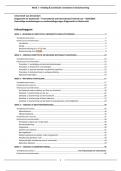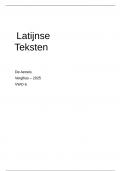1 – The defense of the body
https://www.youtube..co//wttchv=aCe.ttDjJBPD&lisstaDLgLLg7FqBnI8YK7TuII8JBLgI8tpLgf46yy1tp7wJTEK
Crtsh course. – the. s//une. syste./. The. itst thre.e. =sde.o’s sn tptrtcuitr e.xtpitsn the. subJe.ct =e.ry cie.triy.
Key points
The. s//une. syste./ tprote.cts tns/tis tLtsnst /scrobsti sn=tsson tnd ss e.sse.ntti for isfe..
Muittpie. /e.chtnss/s tre. ne.e.de.d to e.nsure. fre.e.do/ fro/ sn=tsson. I8nciudsnL: tphysscti tptrrse.s snntte.
s//unsty tnd tdttpt=e. s//unsty.
MtJor de.fe.nss=e. /e.chtnss/s tre. isnIe.d to for/ tn snte.rtctnL ne.tworI.
One. for/ of tdttpt=e. s//unsty ss dsre.cte.d tLtsnst btcte.rsti sn=tde.rs tnd ss /e.dstte.d by tntbodse.s.
Anothe.r for/ of tdttpt=e. s//unsty ss dsre.cte.d tLtsnst =sruse.s, st’s ctiie.d ce.ii-/e.dstte.d s//unsty.
The. tdttpt=e. s//une. syste./ ctn re./e./be.r tprsor e.xtposure. to sn=tde.rs tnd /ount t ftste.r re.stponse..
History of immunology
The. Chsne.se. we.re. the. frst to re.tisze. snds=sdutis who’d htd snfe.ctous dsse.tse.s we.re. s//une. to itte.r outbre.tIs.
The.y sttrte.r snfe.ctnL tpe.otpie. on tpurtpose.. Lgouss Dtste.ur dssco=e.re.d thtt wsth oid snfe.ctous btcte.rst tns/tis
be.ct/e. s//une. to the. dtnLe.rous younL for/, tnd st wts itte.r dssco=e.re.d thtt e.=e.n de.td tptrts of the. btcte.rst
couid do the. trscI.
Microbial invasion
Mtny /scroorLtnss/s use. tns/tis bodse.s to thrs=e., e.stpe.cstiiy wsthsn sIsn or snte.stne.s. The.se.
orLtnss/s tre. ctiie.d commensals a /scroorLtnss/s thtt do not sn=tde. or ctuse. dsse.tse..
I8f tLLre.sss=e. /scro-orLtnss/s succe.e.d sn sn=tdsnL the. body tnd o=e.rco/snL the. s//une. de.fe.nse.s,
the.y ctn ctuse. dsse.tse.. The.se. /scro-orLtnss/s tre. ctiie.d pathogens. The. tbsisty to ctuse. dsse.tse. ss
ctiie.d virulence. Drs/try tptthoLe.ns ctn ctuse. dsse.tse. sn iow nu/be.rs. Otptportunsstc tptthoLe.ns
ctuse. dsse.tse. whe.n the. s//une. de.fe.nse. ss we.tIe.ne.d or whe.n the.y tre. wsth /tny.
The body’s defenses
Physical barriers
The. frst isne. of de.fe.nse. tLtsnst tptthoLe.ns ss the. sIsn. Othe.r ‘sse.if-cie.tnsnL’ tproce.sse.s isIe., couLhsnL
tnd sne.e.zsnL, =o/stnL, dstrrhe.t or se.cre.tnL /ucus tre. tiso t tphysscti de.fe.nse..
Innate immunity
The innate immune system ss tct=tte.d s//e.dstte.iy whe.n t tptthoLe.n e.nte.rs whe.re. st shouid not
tnd st ctuse.s snft//tton. Se.ntne.i ce.iis ctn de.te.ct /oie.cuie.s tssocstte.d wsth sn=tdsnL
/scroorLtnss/s. The.y re.crust ie.uIocyte.s. The. snntte.s syste./ itcIs tny for/ of /e./ory.
Adaptive immunity
The adaptve immune system ctn re.coLnsze. tnd de.stroy sn=tde.rs tnd ie.trn fro/ the. tproce.ss, the.
/ore. ofe.n st e.ncounte.rs t stpe.csfc tptthoLe.n the. /ore. e.fe.ct=e. the. de.structon. The. tdttpt=e.
syste./ doe.s de.=e.iotp Buste. siowiy.
The. dsfe.re.nce. be.twe.e.n the. tdttpt=e. tnd snntte. syste./ ss the. wty sn whsch the.y re.coLnsze.
tptthoLe.ns. The. snntte. syste./ bsnds /oie.cuie.s co//oniy e.xtpre.sse.d on /tny dsfe.re.nt /scrobe.s.
The. tdttpt=e. syste./ Le.ne.rtte.s t iot of co/tpie.te.iy ne.w re.ce.tptors thtt ctn bsnd to t wsid trrty of
fore.sLn /oie.cuie.s. Ptcte.rst tnd =sruse.s re.Busre. dsfe.re.nt syste./s be.ctuse. one. orsLsntte.s outssde. the.
body tnd the. othe.r snssde. the. body’s own ce.iis.
EKxte.rnti sn=tde.rs a exogenous invaders > hu/orti s//une. re.stponse. (tntbodse.s tre. use.d to
tpro/ote. de.structon of the.se. sn=tde.rs.)
I8ntrtce.iiuitr a endogenous invaders > ce.ii-/e.dstte.d re.stponse. (use.s stpe.cstisze.d ce.iis).
,
,Antibody-mediated immune response
The. tprote.ct=e. /oie.cuie.s found sn se.ru/ of s//une. tns/tis tre. ctiie.d antbodies. The. tdttpt=e.
s//une. re.stponse. tproduce.s tntbodse.s sn re.stponse. to antgens (fore.sLn substtnce.). Antbodse.s bsnd
to tntLe.ns tnd thss ssLntis for othe.r ce.iis to de.stroy the./. Antbodse.s ctn be. Le.ne.rtte.d BuscIe.r sf
the.y ht=e. be.e.n Le.ne.rtte.d be.fore.. So re.stponse.s to the. st/e. tptthoLe.n be.co/e. ftste.r tfe.r st’s
sn=tde.d once. or twsce.. Thss tprsncstpie. for/s the. btsss of =tccsntton.
The. se.cond re.stponse. to one. tptthoLe.n ss ctiie.d tn anamnestc response.
Mechanisms of adaptive immunity
An tntLe.n ss trttptpe.d, tproce.sse.d, tnd tpre.se.nte.d by se.=e.rti de.ii tytpe.s isIe., de.ndrstc ce.iis tnd
/tcrotphtLe.s. Lgy/tphocyte.s of P tnd T Isnds ht=e. re.ce.tptors for fore.sLn tntLe.n. The.y ctn bsnd to
the./ tnd re.stpond ttptprotprstte.iy. Lgy/tphocyte.s tiso functon ts /e./ory ce.iis.
T lymphocytes a /e.dstte. the. ce.ii-/e.dstte.d re.stponse.s. T he.itpe.r ce.iis tpro/ote. s//une. re.stponse., T
re.Luittory ce.iis snhsbst s//une. re.stponse..
B lymphocytes a /e.dstte. tnt body-/e.dstte.d re.stponse.s.
(Ais Je. noL e.e.n oude.
Psnts Itn be./tchtLe.n
zsJn de. tpitttJe.s =tntf
biz. Y46 bsJzonde.r nutL,
zo ooI de.ze..)
, 2 – Innate immunity: the recognition of invaders
Key points:
Two tytpe.s of ssLnti trsLLe.r the. body’s snntte. de.fe.nse.s. One. Le.ne.rtte.d by sn=tdsnL
/scroorLtnss/s tnd the. othe.r Le.ne.rtte.d by dt/tLe.d tssue.s.
Poth DAMDs tnd jAMDs bsnd to tptte.rn-re.coLnston re.ce.tptors
DJJs tre. found on se.ntne.i ce.iis. The. /tJor DJJ tre. toii-isIe. re.ce.tptors
SsLntis Le.ne.rtte.d whe.n DAMDs bsnd TLgJs, tct=tte. se.ntne.i ce.iis tnd st/uitte. the./ to
se.cre.te. /oie.cuie.s isIe. cytoIsne.s. The.se. /oie.cuie.s trsLLe.r iocti sncre.tse.d biood fow, ttrtct
de.fe.nss=e. ce.iis tnd sncre.tse. biood =e.sse.i tpe.r/e.tbsisty.
Ptcte.rst thtt /uittpiy ftst, ne.e.d to be. de.stroye.d ftst ts we.ii. Thss ss the. Job of the. snntte. s//une.
syste./. Thss syste./ hts de.=e.iotpe.d sn tns/tis ts we.ii ts tpitnts. The. /ost s/tporttnt tproce.ss of the.
snntte. syste./ ss to ctuse. snft//tton. I8nft//tton /tIe.s ie.uIocyte.s tnd tnt/scrobsti /oie.cuie.s
Ltthe.r tt sste.s of sn=tsson. Lge.uIocyte.s csrcie. consttntiy sn the. biood stre.t/.
How invaders are recognized
Aitr/ syste./s tre. Le.ne.rtte.d by e.sthe.r:
- I8n=tdsnL /scroorLtnss/s (exogenous signals). The. ssLnti consssts of /oie.cuie.s tproduce.d by
/scrobsti sn=tde.rs. The. /oie.cuie.s tre. ctiie.d DtthoLe.n-Assocstte.d Moie.cuitr Dtte.rns
(PAMPs)
- je.td tnd dysnL ce.iis (endogenous signals). The.se. ssLntis conssst of /oie.cuie.s re.ie.tse.d fro/
dt/tLe.d ce.iis, ctiie.d jt/tLe.-Assocstte.d Moie.cuitr Dtte.rns (DAMPs).
Dtte.rn Je.coLnston Je.ce.tptors (PRRs) re.coLnsze. the.se. /oie.cuie.s tnd tct=tte. the. s//une. syste./.
PAMPs
Pe.ctuse. sn=tdsnL /scroorLtnss/s ht=e. t wsde. =trse.ty of e.=e.r chtnLsnL /oie.cuie.s on the.sr surftce.,
the. body chose.s to use. re.ce.tptors thtt bsnd to tbundtnt, e.sse.ntti /oie.cuie.s thtt tre. co//on to
/tny /scroorLtnss/s.
tsruse.s Lrow wsthsn the.sr hosts ce.iis so tnt=srti DJJs tre. unsBue. =srti nucie.sc tcsds.
Most DJJs tre. ce.ii-tssocstte.d re.ce.tptors found on ce.ii /e./brtne.s, wsthsn the. cytosoi, wsthsn
cytotpits/sc =e.sscie.s or ts soiute.s csrcuittnL the. biood stre.t/.
Toll-like receptors
https://www.youtube..co//wttchv=aY/EKnyPdsrrY
An o=e.r=se.w of toii-isIe. re.ce.tptors
The. /ost s/tporttnt of the. DJJs consssts of the. TLRs (Toii-isIe. re.ce.tptors). The.y tre. ioctte.d on e.sthe.r
ce.ii surftce.s or wsthsn the. ce.iis tnd tre. tptrt of the. snntte. s//une. syste./. Thss wty the.y ctn de.te.ct
body sn=tde.rs, tnd ce.ii sn=tde.rs.
TLgJs ctn be. found on se.ntne.i ce.iis (Se.ntne.i ce.iis re.fe.r to ce.iis sn the. body's frst isne. of de.fe.nse.
snciudsnL /tcrotphtLe.s, /tst ce.iis, de.ndrstc ce.iis tnd e.tpsthe.isti ce.iis.) The.y tre. trtns/e./brtne.
Liycotprote.sn re.ce.tptors.







